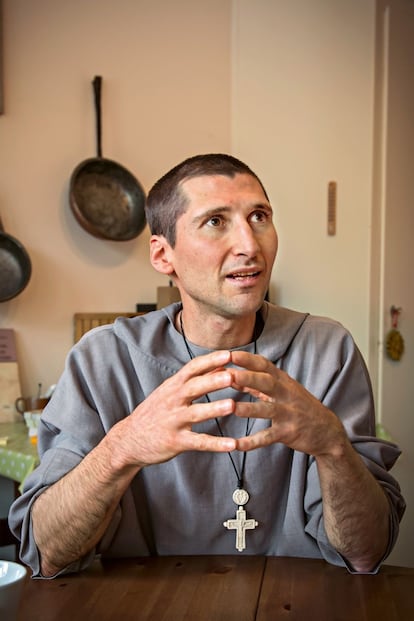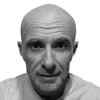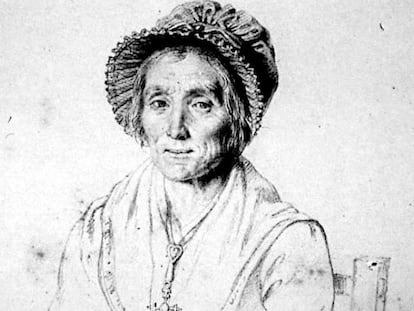Didier Berthod, from rock-climbing star to monk and back again
In 2006, the Swiss mountaineer gave it all up for God, but now he’s returned to scaling cliffs

Didier Berthod disappeared from the rock-climbing scene overnight. Some said he was recovering in a monastery from a serious knee injury, but the truth was he had already abandoned his former life. It was 2006 and Berthod was a 25-year-old elite climber, a fearless and inspirational pioneer in the specialized world of scaling fissures on sheer rock faces. The charismatic Swiss climber didn’t talk much, but he didn’t need to – his exploits spoke for themselves. Sponsors feverishly competed for his endorsements. To the outside world, Berthod seemed to delight in the sport’s camaraderie and frugal lifestyle, and in the uncomplicated spirituality of the outdoors.
No one could see Berthod’s inner struggle, his pain and sadness. Maybe it was because the world saw a young climbing fanatic who was always striving to get stronger, train harder and be the first to do the impossible. He even mastered the one-finger pull-up. Perhaps it was this drive that led Berthod to hide his knee injury from his climbing partners and the film crew that was recording the first free ascent of the most difficult fissure on the planet – Cobra Crack (British Columbia, Canada). He didn’t say a word to anyone in the climbing world, and instead called his mother. “Today is a wonderful day. I’ve broken my knee and can’t climb anymore. I can finally quit.”
One of the last scenes in the documentary by Sender Films (The Dawn Wall; The Alpinist) about the Cobra Crack free ascent shows a smiling Didier Berthod leaning on his crutches as he speaks to the camera. “I came here to feed my ego and my vanity – to be the first.” There was no on-screen drama. Instead of anger and frustration, Berthod displayed an uncharacteristic peace and acceptance. No one suspected that he was saying goodbye to climbing that day.
Berthod, who was raised in a family of devout Catholics, met a priest in 2006 who re-ignited his faith and guided him to a Franciscan monastery. Berthod went through those doors and left his former life behind, including his family. He didn’t see them again for 10 years. His new, cloistered existence put an end to a life of imitation, as he called it.
Didier Berthod discovered climbing when he was 12, and immediately excelled at the sport. Then he read an article in a climbing magazine when he was 18 that changed his view of the vertical world. He saw pictures of endless, elegant fissures running up rock walls until they disappeared from view. It was a different aesthetic and one that fascinated him. Berthod set out to be the best crack climber on the planet, drawn by the adventure and controlled danger.

Berthod fell in love with it all. In 2003, he found a crack on a rock face in Italy’s Orco Valley with fixed ropes running along an overhang. He ripped them out and tackled the climb unassisted – a free climb. He later learned that it was the most difficult crack in Europe. Now he was ready to conquer the legendary cracks of the United States and Canada. Berthod seemed happy and satisfied that he had found his place in the world, a place where he could express his own identity. For a while, that drove him to be the best, no matter what he had to sacrifice. He didn’t have a coach, a method or a plan – pain was his thermometer. But the teenage dream with its good vibes, beer drinking and outdoor camping just wasn’t enough for Berthod. The dream was too small.
It was a hollow lifestyle. He kept telling himself that there should be something more in life, something bigger. But his body marched in the opposite direction, demanding more adrenaline and greater challenges. In Fissure, a 2018 documentary about Berthod directed by Christophe Margot, he explained what he was going through back then. “I felt like a junkie, someone who craved a daily dose of climbing. If I didn’t get it, I got angry. I hated that feeling because it kept me from being truly free. I needed to be free, and that’s what my faith gave me – that and spiritual healing.”
The climbing world was baffled when Berthod stopped appearing on magazine covers. “Obviously, people who didn’t know me well thought that I’d gone off the deep end back in 2006,” said Berthod in Fissure. “But those closest to me knew that I was religious, and that I often pondered the meaning of life. Especially because several friends and family members had committed suicide, which left me with many unresolved questions.” But Berthod also withdrew from the world for another reason – he had gotten a Canadian girl pregnant with a daughter who is now almost 17. Father and daughter recently met for the first time.

In 2018, Berthod was ordained a priest and started climbing again, almost 14 years since he last put on climbing gear. And he’s back together with his old sponsor – Scarpa – an Italian manufacturer of adventure sports equipment. He spent four years in a monastery between 2006 and 2010. Then he spent five years in a Swiss village studying theology, and three more preparing to become a priest. “For many years, I was 100% dedicated to living a highly spiritual and radical Christian life. I once thought that I would be a monk for the rest of my life, or perhaps a missionary. But I left the monastery and dogmatic religion in 2020 – I didn’t want to be a Catholic fundamentalist, although I’m still a priest. I still love the gospel of Christ and I continue to study theology. I discovered that I could live out my faith without withdrawing from society, and that has freed me to tackle some unfinished business in my life, such as meeting my daughter and getting back to climbing. Now I can do it all – climbing, living, following God...”
Berthod now trains with a friend four or five days a week, and crack climbing is still his favorite. After years of seclusion, his wiry physique has regained some of its muscle. He needs to feel strong again, but is no longer driven to be the best. That fire no longer burns inside, but some comforting embers still remain. He has learned to value the human relationships that climbing offers, and his mission now is to pass on his joy to everyone he meets. Berthod pastors the parish of Collombey-Muraz (Switzerland), where he celebrates Masses, baptisms and funerals, and cares for all the lonely people who come his way.
As he approaches his 42nd birthday, Berthod feels he has finally found the right balance. “It’s cost me a lot, but I’ve found a way to be human in this world. I needed time to discover my identity and purpose in life. I don’t proselytize when I’m climbing, and I don’t pretend to be the cool climber-priest at church.”
Tu suscripción se está usando en otro dispositivo
¿Quieres añadir otro usuario a tu suscripción?
Si continúas leyendo en este dispositivo, no se podrá leer en el otro.
FlechaTu suscripción se está usando en otro dispositivo y solo puedes acceder a EL PAÍS desde un dispositivo a la vez.
Si quieres compartir tu cuenta, cambia tu suscripción a la modalidad Premium, así podrás añadir otro usuario. Cada uno accederá con su propia cuenta de email, lo que os permitirá personalizar vuestra experiencia en EL PAÍS.
¿Tienes una suscripción de empresa? Accede aquí para contratar más cuentas.
En el caso de no saber quién está usando tu cuenta, te recomendamos cambiar tu contraseña aquí.
Si decides continuar compartiendo tu cuenta, este mensaje se mostrará en tu dispositivo y en el de la otra persona que está usando tu cuenta de forma indefinida, afectando a tu experiencia de lectura. Puedes consultar aquí los términos y condiciones de la suscripción digital.
More information
Archived In
Últimas noticias
Most viewed
- Reinhard Genzel, Nobel laureate in physics: ‘One-minute videos will never give you the truth’
- Pablo Escobar’s hippos: A serious environmental problem, 40 years on
- Charles Dubouloz, mountaineering star, retires at 36 with a farewell tour inspired by Walter Bonatti
- Why we lost the habit of sleeping in two segments and how that changed our sense of time
- The fall of a prolific science journal exposes the billion-dollar profits of scientific publishing










































